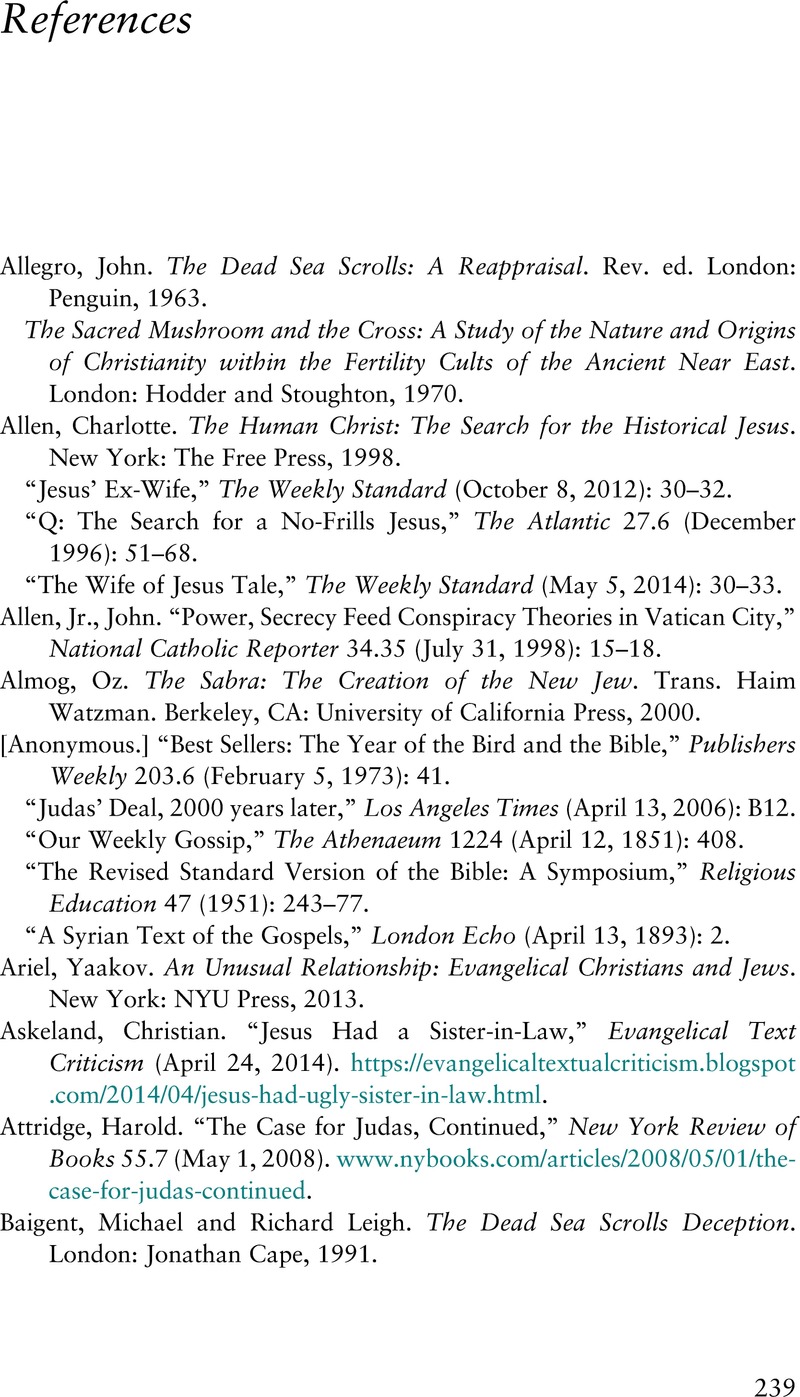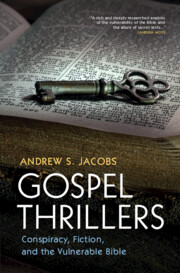References
Published online by Cambridge University Press: 09 November 2023
Summary

- Type
- Chapter
- Information
- Gospel ThrillersConspiracy, Fiction, and the Vulnerable Bible, pp. 239 - 257Publisher: Cambridge University PressPrint publication year: 2023



